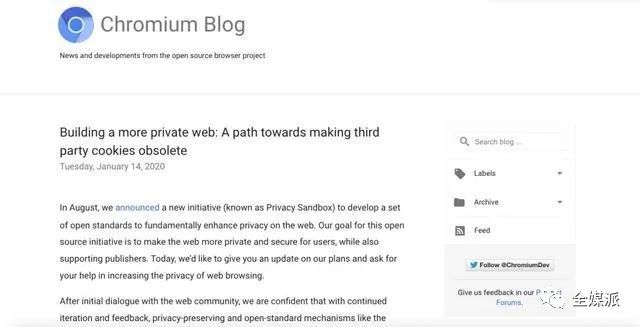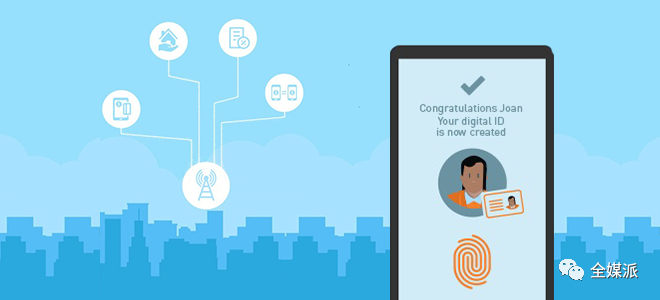Crises surfaced and there were many tricks.
Editor’s note: This article is from the micro-channel public number “all-media school” (ID: quanmeipai) , Author: Tencent Media.
On January 14, 2020, Google announced that in order to protect user privacy, its browser Chrome will gradually delete third-party cookies within two years. Earlier, third-party cookies have been banned by Mozilla’s Firefox browser and Apple’s Safari browser.
The decision to phase out third-party cookies may cost Google, but Google has already collected a large amount of first-party data from users with services such as Gmail, YouTube, Maps, etc., which guarantees Google’s centralized position.
However, advertisers, media and technology companies that rely on third-party cookies for user identification have no such confidence. As a result, Google ’s decision to delete third-party cookies caused panic. In addition to panic, companies in the industry have begun to look for alternatives to cookies. This issue of All Media Group (ID: quanmeipai) compiles overseas articles, analyzes what new attempts have been made by media and advertisers, and how can they enter the post-cookie era?

First-party data strategy for head institutions
Permutive, a data management platform provider, is testing a solution that uses contextual semantics to map various audiences in the open market, and first-party data provided by the media to portray these audiences.
The principle of this solution is similar to the “Federated Learning of Cohorts” previously proposed by Google. It uses machine learning to study the browsing habits of similar user groups, and then conducts digital marketing. In the coming months, the Interactive Advertising Bureau (IAB) will test the effectiveness of the program.
Permitive’s marketing director Amit Kotecha said their goal is to build a set of industry standards.

In the past, the media were worried that sharing valuable first-party data might be used by opponents, but this concern is no longer a problem with the establishment of agreements such as the Media Data Alliance.
Media such as Vox Media and Washington Post have begun showing their first-party data strategies, thereby reducing their reliance on third-party cookies and other intermediaries.
Vox Media’s chief revenue officer Ryan Pauley said that third-party data companies have created a $ 19 billion industry by intervening in media and advertisers, and the media could not benefit from this in the past.

Methods to deal with the post-cookie era are frequent
With the crisis of cookie deletion, media and advertisers need to find ways to replace segmentation data previously obtained from third-party cookies. To this end, they started various attempts.
The old method returns to the stage
After the creation of cookies, the old tracking methods were once considered dispensable. However, these old methods may reappear in the post-cookie era.
Some advertisers are considering reusing mobile IDs. In response, an advertising agency ’s data strategy executive said: Because browser companies are unanimously opposed to fine-grained audience tracking, it ’s not feasible for users like mobile ID to keep tracking when they use the device.

Programmatic guaranteed deals (PGD) have also been taken into consideration by advertisers. Within a certain period of time, the advertiser and the media reach an agreement to exclusively purchase advertising space resources at a pre-agreed price. This method can avoid fraud and low-quality advertising resources, but it is more expensive. After leaving third-party cookies in the future, if advertisers can get more data from the media, they may adopt this transaction method.
At present, data research companies are eagerly promoting advertising agencies to reach cooperation. In the user insights provided by the research company, advertisers can obtain data on sales and foot traffic, learn how their ads are increasing brand awareness, and how much their ads reach on different screens. However, these methods require advertisers and their agencies to pay close attention to details. Although some advertising managers can be shuddered, some advertising agencies have to regain this old method due to business needs.

Shared ID and potential crisis
Shared ID is a standard method for identifying and sharing user data between media and advertising technology providers. For media, advertisers, and technology providers, sharing IDs is a more popular method. In theory, it can provide a more reliable way to identify online users without matching cookies from other companies.
Advertising technology providers such as ID5 and The Trade Desk, Advertising ID Consortium, and DigiTrust have created anonymous unified IDs for individual users. Media and their signed advertising partners can use these unified IDs to identify online user.
Even so, there is a risk in sharing IDs-it requires third-party cookies to ensure the use of media, advertisers, and ad technology vendors at multiple sites, so it is likely that it will not be “guarded” by the browser. Currently, DigiTrust’s ID has been blocked by Mozilla’s Firefox browser, and it is only a matter of time before other browsers take the same action.

Email / phone number identification
At the IAB Leaders’ Annual Meeting on February 10th, the IAB Technology Labs proposed to develop a new identifier based on the user’s email address or phone number to provide a more standard and accurate than third-party cookies. User identification mode.
IAB is not the only organization with this idea. Advertising agencies, media and technology companies all want to support future online advertising through email addresses or phone numbers. Given that Facebook and Google have dominated the advertising market with their massive login user data bases on their platforms, advertisers consider this email and phone number-based identifier to be an effective way to compete.

This kind of personal information-based identifier based on first-party data may not benefit the entire open network. Because this method is only effective for platforms with a large number of registered users, the disadvantages of mid-tail media will be magnified.
If the media put pressure on readers to provide e-mail addresses and phone numbers, it may lead to the emergence of a “registration wall”, and users can only access the content behind the wall by logging in. To some extent, the “registration wall” can help the platform obtain user registration data, but it may also cause them to lose some of their audience.
Objectively speaking, disabling third-party cookies can indeed protect user privacy, but it can also hurt digital advertising-related practitioners. At present, Google will not ban cookies in a short period of time, and media and advertisers still have time to find countermeasures. In any case, in the absence of third-party cookies in the future, as the “gatekeeper” of the audience, the media will have greater power, and the relationship between advertisers and the media will be closer.
Reference link:
[1] https://www.vox.com/recode/2020/1/16/21065641/google-chrome-Cookie-ban-advertisers
[2] https://digiday.com/media/publishers-planning-end-third-party-Cookie/
[3] https://digiday.com/marketing/Cookies-way-advertisers-turn-old-school-measurement-methods /
[4] https://digiday.com/marketing/third-party-Cookies-way-shared-ids-face-existential-crisis/
[5] https://digiday.com/media/iab-looking-first-party-data-replace-Cookies-small-publishers-may-lose/